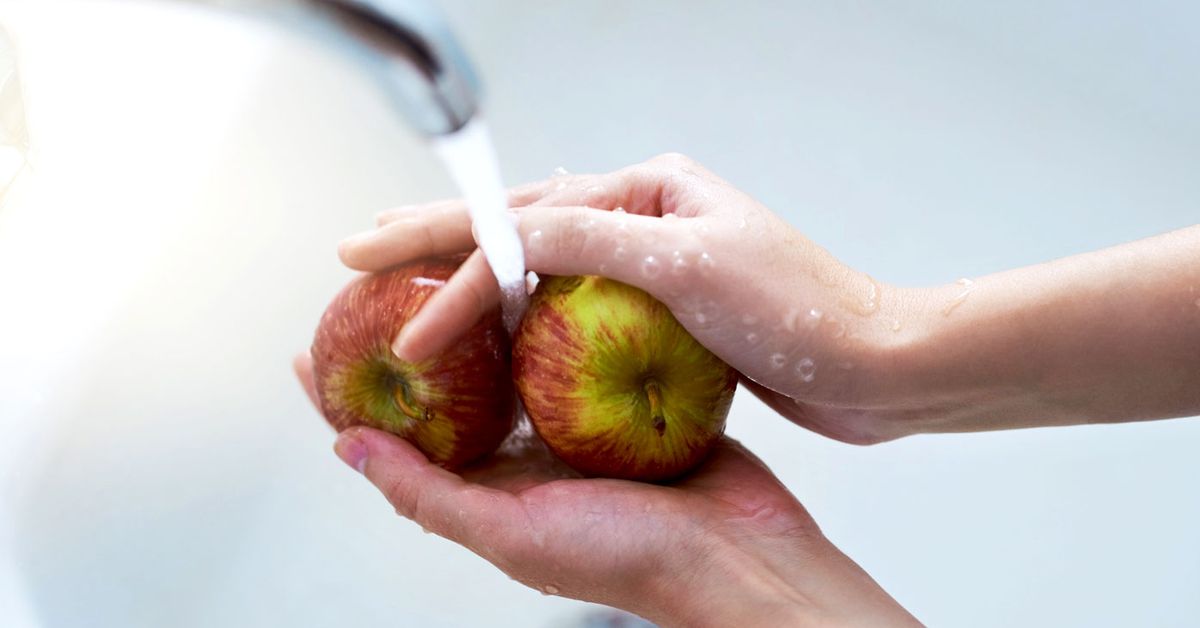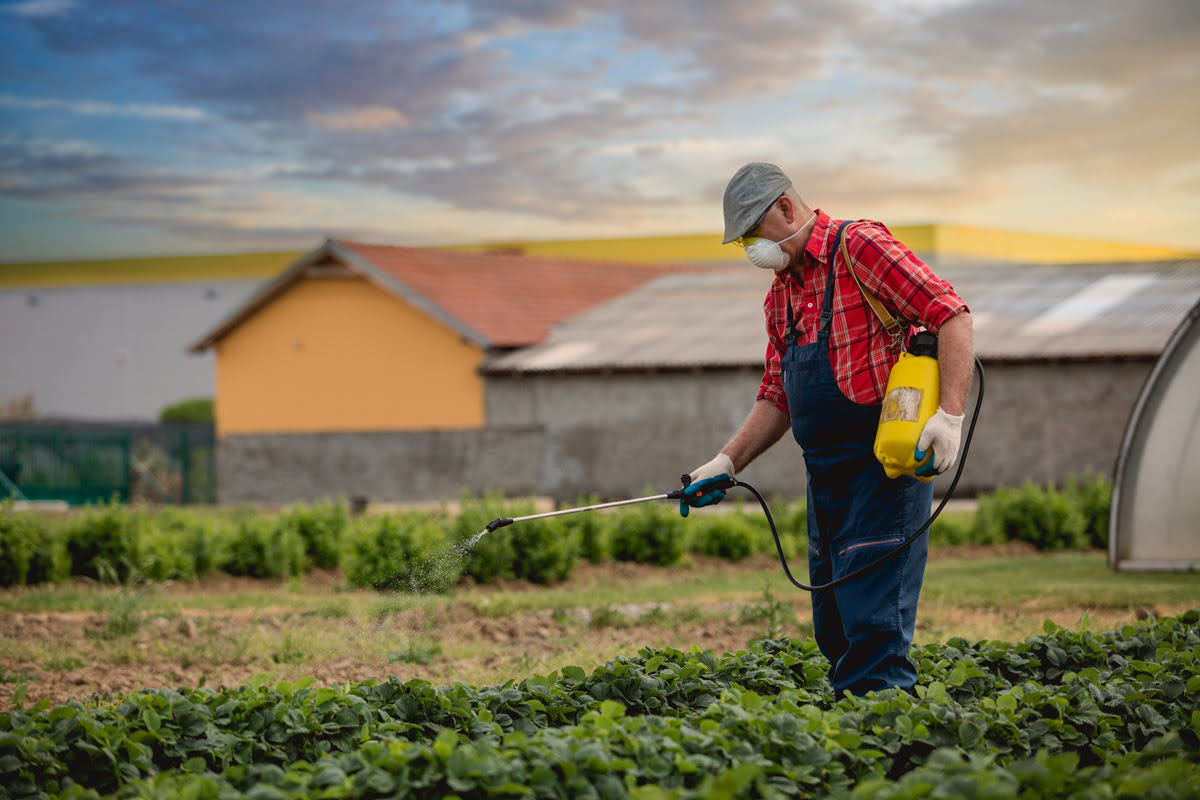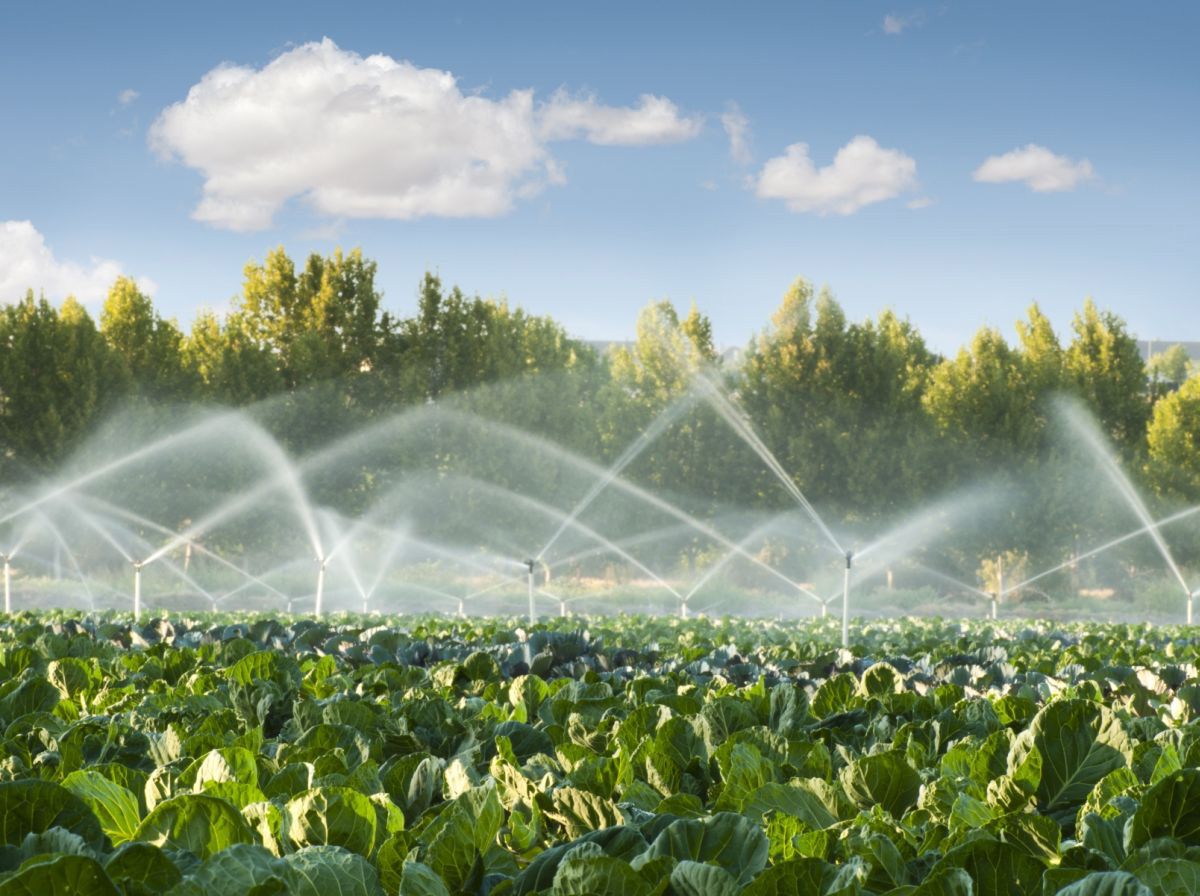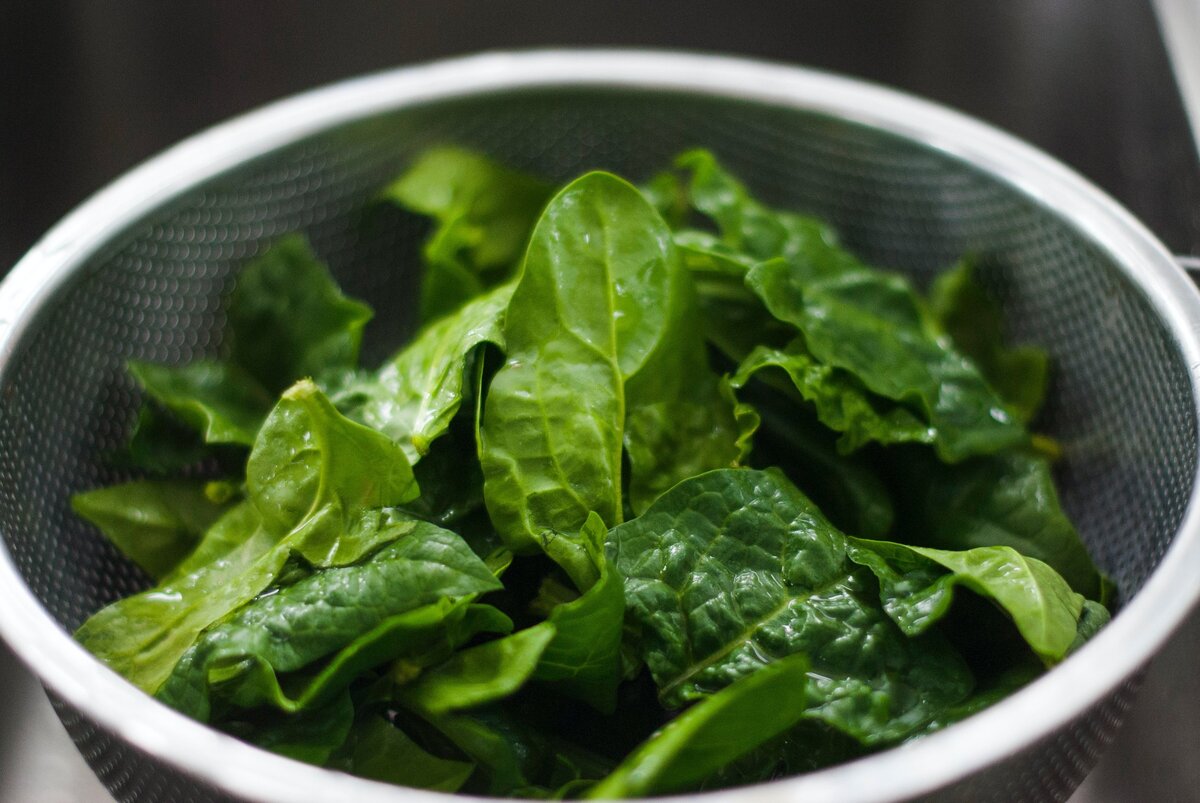Home>Gardening News and Trends>Latest News>How Does Integrated Pest Management Differ From Solely Using Chemical Pesticides


Latest News
How Does Integrated Pest Management Differ From Solely Using Chemical Pesticides
Published: November 26, 2023
Discover the key differences between integrated pest management and using chemical pesticides. Stay updated with the latest news in pest control and make informed decisions for a healthier environment.
(Many of the links in this article redirect to a specific reviewed product. Your purchase of these products through affiliate links helps to generate commission for Chicagolandgardening.com, at no extra cost. Learn more)
Table of Contents
- Introduction
- Definition of Integrated Pest Management (IPM)
- Definition of Solely Using Chemical Pesticides
- Differences Between Integrated Pest Management and Solely Using Chemical Pesticides
- Benefits of Integrated Pest Management
- Limitations of Integrated Pest Management
- Benefits of Solely Using Chemical Pesticides
- Limitations of Solely Using Chemical Pesticides
- Conclusion
Introduction
Welcome to the world of pest control, where the battle against unwanted invaders is an ongoing challenge. When it comes to pest management, there are two primary approaches: Integrated Pest Management (IPM) and solely using chemical pesticides. Both methods aim to eradicate pests and protect our homes, crops, and environment, but they differ significantly in their approaches.
Integrated Pest Management is a comprehensive and sustainable approach that focuses on prevention, monitoring, and control of pests while minimizing risks to human health and the environment. On the other hand, solely using chemical pesticides relies heavily on the use of synthetic chemicals to kill pests, without considering alternative solutions.
In this article, we will explore the differences between Integrated Pest Management and solely using chemical pesticides, as well as the benefits and limitations of each approach. By understanding these distinctions, we can make informed decisions about pest control methods that are environmentally friendly, effective, and safe for humans and other living organisms.
Definition of Integrated Pest Management (IPM)
Integrated Pest Management (IPM) is an approach to pest control that focuses on long-term prevention, management, and suppression of pests through a combination of techniques. It is a holistic and environmentally friendly approach that aims to minimize the use of chemical pesticides while still effectively managing pest populations.
The core principles of IPM include:
- Monitoring and Identification: IPM begins with careful monitoring and identification of pests and their behavior. This allows practitioners to understand the pest’s life cycle, habits, and vulnerabilities.
- Prevention: The emphasis of IPM is on proactive and preventive measures to reduce the risk of pest infestations. This can include practices such as maintaining proper sanitation, sealing entry points, and using pest-resistant varieties of crops.
- Biological Control: IPM promotes the use of natural enemies, such as predatory insects, parasites, and pathogens, to control pest populations. These natural predators help maintain a balance in the ecosystem and reduce reliance on chemical pesticides.
- Cultural Controls: This involves modifying the environment to make it less favorable for pests. It can include practices such as crop rotation, proper irrigation, and removing pest habitats.
- Mechanical and Physical Controls: IPM encourages the use of physical barriers, traps, and mechanical removal of pests as control measures. This can include installing nets, using traps, or manually removing pests.
- Chemical Controls: While IPM aims to minimize the use of chemical pesticides, they can still be employed when necessary. However, the selection and application of pesticides in IPM follow strict guidelines to ensure minimal impact on human health and the environment. Targeted and judicious use of chemicals is preferred over blanket applications.
Overall, Integrated Pest Management is an eco-friendly and sustainable approach that takes into account the ecological balance and long-term consequences of pest control methods. By combining multiple strategies, it provides an effective solution to pest management while minimizing harm to non-target organisms and the environment.
Definition of Solely Using Chemical Pesticides
Solely using chemical pesticides is a conventional approach to pest control that predominantly relies on synthetic chemicals to eradicate pests. In this method, the primary objective is to kill or eliminate pests using chemical agents, without considering other alternative pest management techniques.
Chemical pesticides, also known as biocides, are formulated to target specific pests and disrupt their biological processes. These pesticides can be applied in various forms, such as sprays, baits, or granules, and can be systemic or contact-based. The use of chemical pesticides can provide a quick and immediate solution to pest problems.
However, solely using chemical pesticides often neglects the negative environmental and health impacts associated with their use. These pesticides can persist in the environment, contaminating soils, water sources, and affecting non-target organisms such as beneficial insects, birds, and mammals. There is also a concern about the development of pesticide resistance in pests, making them harder to control over time.
While chemical pesticides are effective in killing pests, they do not address the root cause of pest problems. This approach focuses solely on symptom relief, providing a short-term solution without addressing the underlying conditions that attract pests. It can lead to a cycle of repeated pesticide applications, which may cause ecological imbalances and harm beneficial organisms that play important roles in the ecosystem.
Furthermore, the excessive use of chemical pesticides can pose health risks to humans. Prolonged exposure to these chemicals can have adverse effects on human health, including respiratory problems, skin irritations, and even more severe conditions in extreme cases.
It is important to note that chemical pesticides are regulated by government bodies to ensure their safe and appropriate use. However, the sole reliance on chemical pesticides without considering alternative pest management strategies can have significant consequences on both the environment and human health.
Overall, solely using chemical pesticides is a traditional, reactive approach to pest control that solely relies on synthetic chemicals to eradicate pests. While it may provide immediate relief from pest-related issues, it brings with it a range of potential environmental and health concerns.
Differences Between Integrated Pest Management and Solely Using Chemical Pesticides
Integrated Pest Management (IPM) and solely using chemical pesticides are two distinct approaches to pest control, differing in their methods, principles, and ecological impacts. Let’s explore the key differences between these two approaches:
- Approach: The primary difference lies in their approaches. IPM is a comprehensive and holistic approach that emphasizes prevention, monitoring, and control of pests through a combination of techniques. It focuses on long-term solutions and the ecological balance, taking into consideration the impact of pest control methods on human health and the environment. On the other hand, solely using chemical pesticides is a reactive approach that relies mainly on the use of synthetic chemicals to kill pests without considering long-term consequences or alternative strategies.
- Chemical Usage: IPM aims to minimize the use of chemical pesticides and encourages the use of alternative pest management techniques. It employs a range of strategies such as biological control, cultural controls, and mechanical removal of pests before resorting to chemical interventions. In contrast, solely using chemical pesticides relies heavily on the application of synthetic chemicals as the primary method of pest control, often without considering alternative solutions. This approach can lead to over-reliance on chemicals and potential negative impacts on the environment and human health.
- Ecosystem Impact: IPM takes into account the ecological balance and the long-term consequences of pest control methods. It promotes the use of natural enemies and diverse pest management techniques to maintain a healthy and balanced ecosystem. By doing so, it minimizes harm to non-target organisms and reduces the risk of pesticide resistance. In contrast, solely using chemical pesticides can disrupt the natural balance within ecosystems, leading to a decline in beneficial organisms such as pollinators and predatory insects. It can also contribute to pesticide resistance, making pests harder to control over time.
- Long-Term Effectiveness: IPM focuses on sustainable pest management by addressing the underlying causes of pest problems. By utilizing a range of techniques, it aims to control pest populations and prevent future infestations. This approach provides a more long-term and sustainable solution to pest management. Solely using chemical pesticides, on the other hand, may provide immediate relief from pests but fails to address the root causes. It often leads to a cycle of repeated pesticide applications and potential pesticide resistance, which can diminish the long-term effectiveness of this approach.
- Human Health Concerns: IPM places a high priority on human health and minimizes the risks associated with pesticide exposure. By utilizing alternative techniques and targeted pesticide applications, IPM reduces the likelihood of direct exposure to harmful chemicals. In contrast, solely using chemical pesticides carries a greater risk to human health, especially for pesticide applicators and individuals exposed to treated areas. It can lead to respiratory problems, skin irritations, and other potential health issues.
These differences highlight the contrasting approaches and impacts of Integrated Pest Management and solely using chemical pesticides. While chemical pesticides may provide a quick solution, IPM offers a more sustainable and environmentally friendly approach to pest control that considers long-term effectiveness and the preservation of ecosystems.
Benefits of Integrated Pest Management
Integrated Pest Management (IPM) offers numerous benefits compared to solely using chemical pesticides. Let’s explore some of the key advantages of adopting an IPM approach:
- Environmentally Friendly: One of the main benefits of IPM is its environmentally friendly nature. By minimizing the use of chemical pesticides and focusing on alternative pest management techniques, IPM reduces the potential harm to non-target organisms, including beneficial insects, birds, and mammals. It helps maintain the ecological balance and preserves biodiversity within ecosystems.
- Sustainable Pest Management: IPM takes a holistic and long-term approach to pest management. By addressing the root causes of pest problems and implementing preventive measures, IPM aims to control pests and prevent future infestations. This approach reduces reliance on chemical pesticides, leading to more sustainable pest management practices.
- Reduced Pesticide Resistance: Through the use of multiple strategies and the judicious application of chemical pesticides, IPM helps minimize the development of pesticide resistance in pests. By rotating and alternating different pest control methods, IPM reduces the risk of pests becoming resistant to specific chemical pesticides. This allows for more effective and targeted control of pest populations.
- Cost-Effective: While implementing IPM practices may require an initial investment, it can lead to long-term cost savings. IPM aims to prevent pest infestations before they occur, reducing the need for extensive pesticide applications and costly treatments. By employing various techniques, IPM offers a more cost-effective approach to pest management in the long run.
- Protection of Human Health: IPM prioritizes the protection of human health by minimizing the risks associated with pesticide exposure. By utilizing alternative techniques and targeted pesticide applications, IPM reduces the likelihood of direct exposure to harmful chemicals. This makes it a safer option for pest control, especially in residential areas and environments where children and vulnerable individuals are present.
- Enhanced Crop Quality: IPM aims to maintain healthy crops by managing pests effectively. By utilizing various strategies, such as cultural controls and biological control methods, IPM helps to preserve and enhance the quality of crops. This leads to higher yields, improved product quality, and reduced reliance on chemical pesticides.
- Adaptability: IPM is a flexible and adaptable approach to pest management. It can be customized to suit specific pest problems, crop types, and environmental conditions. The combination of different pest control techniques allows for adjustment based on the severity of infestations and the specific requirements of different situations.
Overall, Integrated Pest Management offers a multitude of benefits ranging from environmental sustainability and reduced pesticide resistance to cost-effectiveness and enhanced crop quality. By integrating various pest control techniques and focusing on long-term solutions, IPM provides a comprehensive and effective approach to managing pests while minimizing the impact on human health and the environment.
Limitations of Integrated Pest Management
While Integrated Pest Management (IPM) offers numerous benefits, it also has certain limitations that should be considered. Let’s explore some of the key limitations of IPM:
- Time and Resource Intensive: Implementing IPM practices requires time, resources, and expertise. It involves careful monitoring, continuous assessment, and the integration of multiple pest management techniques. This can be challenging for farmers, homeowners, or businesses that may lack the necessary knowledge, resources, or access to trained professionals.
- Complexity: IPM requires a comprehensive understanding of pest behavior, natural enemies, cultural practices, and alternative control methods. It involves decision-making based on a wide range of information and factors. The complexity of IPM may make it difficult for some individuals or organizations to implement effectively.
- Initial Costs: Transitioning to an IPM approach may require an initial investment in equipment, infrastructure, and training. The implementation of preventive measures, the use of monitoring techniques, and the adoption of alternative pest control methods may involve additional costs upfront. However, it is important to note that the long-term cost savings and benefits of IPM often outweigh the initial investment.
- Knowledge and Education: Successful implementation of IPM requires a certain level of knowledge and understanding of pest management principles. It may require training, education, and ongoing learning to implement IPM practices effectively. Lack of access to information or limited awareness about IPM may hinder its widespread adoption.
- Variable Efficacy: The effectiveness of IPM can vary depending on the pest species, the severity of infestations, and the specific conditions of the environment. Some pests may be more challenging to manage using non-chemical control methods, necessitating the targeted use of chemical pesticides. Achieving effective pest control through IPM may require a continuous process of trial and error and careful adjustment of strategies.
- Interactions with External Factors: External factors such as weather conditions, climate change, and pest outbreaks can greatly influence the success of IPM. Some years or seasons may present more challenges in terms of pest pressure, making it more difficult to achieve effective control through IPM practices alone.
- Misconceptions and Resistance to Change: There may be misconceptions or resistance to change when it comes to adopting IPM practices. Some may still hold the belief that traditional chemical pesticides are more effective or convenient, hindering the acceptance and widespread adoption of IPM.
Despite these limitations, Integrated Pest Management remains a valuable approach to pest control that provides sustainable and environmentally friendly solutions. By being aware of these limitations, stakeholders can work towards addressing them and finding innovative ways to overcome obstacles in implementing IPM effectively.
Benefits of Solely Using Chemical Pesticides
Solely using chemical pesticides, although having certain limitations and concerns, offers some benefits in specific situations. Let’s explore some of the advantages of relying on chemical pesticides as a primary method of pest control:
- Immediate and Effective Pest Control: One of the main benefits of chemical pesticides is their ability to provide immediate and effective pest control. They are specifically formulated to target and eliminate pests quickly, offering a quick resolution to infestation problems.
- Convenience and Ease of Application: Chemical pesticides are accessible and easy to apply. They come in various formulations such as sprays, granules, or baits, making them convenient for homeowners, farmers, and pest control professionals. Their ease of use allows for rapid application, saving time and effort.
- Predictable Results: Chemical pesticides typically offer predictable results in terms of pest eradication. They have been extensively researched and tested, providing a level of reliability and expected outcomes. This predictability can offer reassurance in situations where immediate and complete pest control is necessary.
- Targeted Pest Control: Chemical pesticides can be selective in targeting specific pests while minimizing harm to non-target organisms. Through proper application techniques, it is possible to focus treatments on areas or specific pest species, limiting the impact on beneficial insects, birds, and other non-target organisms.
- Scalability and Cost-Effectiveness: In some cases, solely using chemical pesticides may offer a cost-effective and scalable approach to pest control. Chemical pesticides can cover large areas and have the potential to control a wide range of pest species. This scalability can be beneficial for agricultural operations or large-scale pest control needs where alternate methods may be impractical or less efficient.
- Reduced Labor Requirements: The use of chemical pesticides can help reduce labor requirements compared to labor-intensive alternative pest management methods. By relying on chemical treatments, fewer man-hours may be needed for monitoring, mechanical control, or the implementation of alternative techniques.
- Minimized Crop Loss: In agricultural settings, chemical pesticides can help prevent significant crop losses caused by pest infestations. They offer a reliable and immediate response, protecting crops and securing yields. This can be particularly important in areas where crop production is essential for economic stability and food security.
While there are benefits to solely using chemical pesticides, it is essential to consider the potential negative impacts associated with their use. It is crucial to exercise caution, follow proper application guidelines, and consider the long-term effects on human health, non-target organisms, and the environment.
It is also important to note that the benefits of solely using chemical pesticides may vary depending on the specific situation, pest species, and the severity of infestations. In many cases, a more integrated and environmentally friendly approach, such as Integrated Pest Management (IPM), may offer a more sustainable and effective long-term solution.
Limitations of Solely Using Chemical Pesticides
Solely using chemical pesticides as the primary method of pest control has several limitations and potential drawbacks. Let’s explore some of the key limitations associated with this approach:
- Environmental Impact: One of the significant concerns with solely using chemical pesticides is their negative impact on the environment. Chemical pesticides can persist in the environment, contaminating soils, water sources, and harming non-target organisms such as beneficial insects, birds, fish, and mammals. Prolonged use of chemical pesticides can disrupt ecosystems and lead to a decline in biodiversity.
- Pesticide Resistance: Over time, pests can develop resistance to chemical pesticides, rendering them ineffective. This is due to genetic adaptations in pest populations that allow them to survive exposure to specific pesticides. The continuous reliance on chemical pesticides without alternate pest management strategies can lead to the emergence of pesticide-resistant pests, making future control more challenging.
- Human Health Risks: Improper application of chemical pesticides or exposure to pesticide residues can pose health risks to humans. Pesticide exposure has been associated with a range of health concerns, including respiratory issues, skin irritations, neurotoxic effects, and even certain types of cancer. Pesticide applicators, agricultural workers, and individuals living in or near treated areas are particularly at risk.
- Non-Target Organism Harm: Chemical pesticides are not specific to the targeted pests and can harm non-target organisms such as beneficial insects, bees, birds, and wildlife. This can disrupt ecological balance, impacting pollination, natural pest control, and overall ecosystem health.
- Limited Long-Term Effectiveness: Solely using chemical pesticides often focuses on symptom relief rather than addressing the underlying causes of pest problems. While they may provide immediate control, the pests can rebound, developing resistance or rebounding populations. This can lead to a cycle of repeated pesticide applications, and the efficacy of chemical pesticides can decrease over time.
- Regulatory and Legal Concerns: The use of chemical pesticides is subject to strict regulations and guidelines, which vary by jurisdiction. Applying chemical pesticides without proper certifications or in violation of regulations can lead to legal consequences. Additionally, the use of certain pesticides may be restricted or prohibited in environmentally sensitive areas or for specific crops, further limiting their usage.
- Disruption of Natural Predators and Biological Control: Chemical pesticides not only kill pests but can also harm natural predators that play a vital role in biological control. By eliminating beneficial insects or disrupting the natural food web, chemical pesticides can inadvertently lead to increased pest populations and a loss of natural pest control methods.
Considering these limitations, it is essential to approach pesticide use with caution and explore alternative methods, such as Integrated Pest Management (IPM), that focus on a more sustainable, environmentally friendly, and long-term pest control approach.
Conclusion
When it comes to pest control, Integrated Pest Management (IPM) and solely using chemical pesticides represent two distinct approaches with their own set of benefits and limitations. IPM offers a comprehensive and sustainable approach that focuses on prevention, monitoring, and control of pests while minimizing risks to human health and the environment. By combining multiple techniques and strategies, IPM provides a more environmentally friendly, efficient, and long-term solution to pest management.
On the other hand, solely using chemical pesticides can offer immediate and effective pest control in certain situations. Chemical pesticides can quickly eradicate pests, provide predictable results, and offer convenience and scalability. However, this approach has limitations and concerns, including negative impacts on the environment, the development of pesticide resistance, potential health risks, and disruption of natural ecosystems.
Given the limitations and potential adverse effects of solely using chemical pesticides, Integrated Pest Management appears to be a more sustainable and environmentally friendly approach to pest control. By minimizing reliance on chemical pesticides and integrating various pest management techniques, IPM promotes the preservation of biodiversity, reduces pesticide resistance, protects human health, and provides long-term effectiveness.
It is crucial for individuals, businesses, and agricultural operations to be aware of and understand the benefits and limitations of both IPM and solely using chemical pesticides. In many cases, a combination of approaches that integrate IPM principles while selectively incorporating chemical pesticides when necessary may be the most effective and environmentally responsible method of pest control.
By prioritizing the health of ecosystems and human populations, adopting integrated and sustainable pest management practices, and continually staying informed about the latest developments in pest control, we can strike a balance between effective pest management and preserving the delicate balance of our environment.









